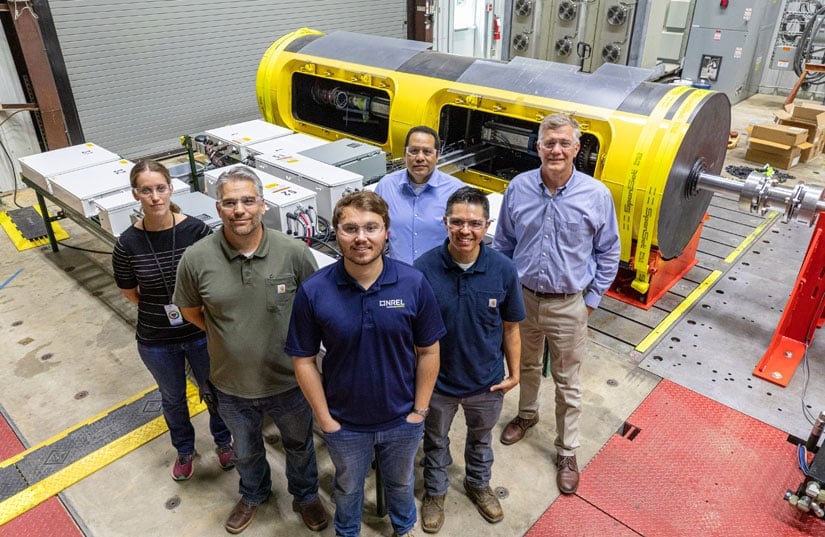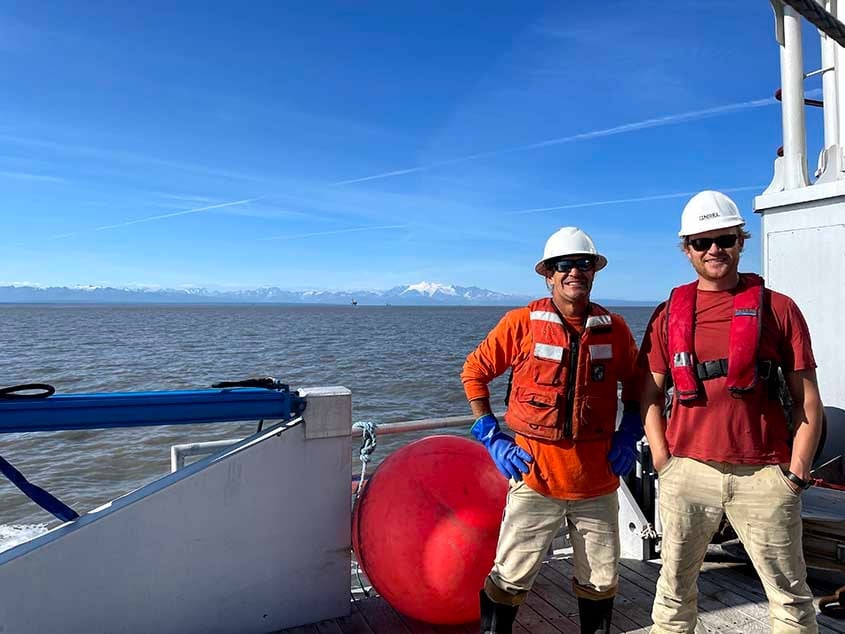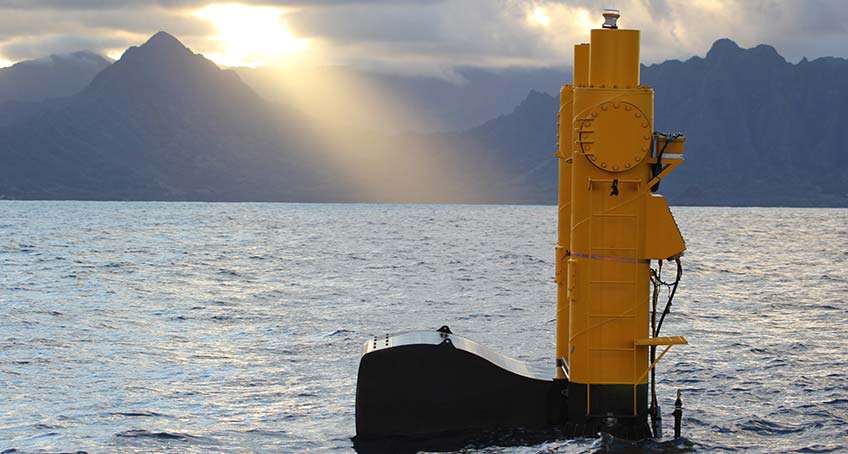Marine Energy Basics
Marine energy—power generated from ocean waves, currents, tides, and temperature changes—is the world's largest untapped energy resource.
The ocean supports more than recreation, transportation, and a habitat for marine life—it can also provide energy. NREL researchers analyze resources and develop technologies to support energy generated from the ocean's waves, currents, tides, and other properties. Text version.
According to the National Ocean Service, oceans cover more than 70% of the planet's surface and hold about 97% of the Earth's water. They also have great potential as a plentiful and reliable energy resource.
What Is Marine Energy?
Also according to the National Ocean Service, nearly 40% of the U.S. population lives in coastal communities where a vast, reliable energy source is in constant motion offshore: the ocean. Waves crash against coastlines, tides ebb and flow, and currents churn millions of miles of water. Each form of ocean movement can be converted into electricity.
There's far more energy surging through our country's waves, tides, and currents than
we could harness and convert into electricity. The United States has enough marine energy pulsing in its waters to meet about 60% of the country's electricity needs. We cannot capture all that energy, but even a little could help energize coastal communities, remote islands, underwater robots, or offshore work such as marine research, fishing, or military operations. And currents—both fast and slow—could provide electricity in isolated areas far offshore or deep beneath the ocean's surface.

C-Power's SeaRAY autonomous offshore power system has the potential to generate energy for offshore vehicles, such as sea drones, used to explore mysterious ocean realms. C-Power CEO Reenst Lesemann (far right) partnered with NREL researchers—including Rebecca Fao, Mark Murphy, Casey Nichols, Ismael Mendoza, and Andrew Simms—to ready the device for its first sea trial off Hawaii. Photo by Vern Slocum, NREL
Is Marine Energy the Same as Ocean Power?
Not necessarily. Marine energy can be created in the ocean but also in rivers, lakes, streams, estuaries, and more. Marine energy means energy generated from:
- Waves, tides, and currents in oceans, estuaries, and tidal areas
- Free flowing water in rivers, lakes, streams, and man-made channels
- Changes in salinity (salt levels) or pressure
- Changes in water temperature.
How Can We Make Energy From Moving Water?
Unlike rivers, which mostly move in one direction, oceans heave up and down, surge back and forth, and even swirl in circles. These chaotic movements can be challenging to harness, and there are hundreds of technological designs vying for commercial success in the marine energy industry (such as highly flexible devices that can stretch, twist, and bend or ones that can change shape to allow destructive waves to flow through). Some use buoys that bob up and down, sway back and forth, and pitch side to side in waves. Others use underwater turbines that spin in fast-moving currents and tides, like those that surge in and out of Alaska's Cook Inlet.

In June 2021, NREL researchers traveled to Alaska's Cook Inlet to investigate how to best harness this massive tidal energy resource, which could power the entire state with marine energy. Photo by Levi Kilcher, NREL
All marine energy technology must overcome one major challenge: potentially corrosive and destructive oceans and rivers. Devices must withstand turbulent and harsh conditions. The ocean can move with more power than any wind, and saltwater and shifting sediments, such as sand, can damage devices. Plus, the marine energy industry has a role to play in protecting and preserving marine ecosystems.
How Could Marine Energy Help Us?
Marine energy is both predictable and dependable. The ocean is always moving, making it an ideal member of the energy team.

Marine energy technology, like this wave energy device from Northwest Energy Innovations, is still in an early stage of development. Many take their first ocean plunge at the U.S. Navy's Wave Energy Test Site near Kaneohe Bay, Oahu, Hawaii, which is pictured here. Photo from Northwest Energy Innovation
Wave-powered devices can provide fresh water to remote communities or for disaster recovery. They can power offshore jobs, such as those in the fishing industry. And they can be a local and more affordable energy source for coastal and remote communities, many of which rely on fossil fuel shipments that don't always make it. Violent storms can delay or even prevent the fuel from reaching its destination, leaving communities in the dark. But if oceans or rivers flow nearby, marine energy could light up their homes, schools, and businesses all year long.
Additional Resources
Marine Energy News and Feature Stories
REDi Island: Renewable Energy Discovery Island (virtual world showing marine energy and hydropower technologies)
Modeling the Path Forward for Marine Energy, NREL Fact Sheet (2022)
Marine Energy in the United States: An Overview of Opportunities, NREL Technical Report (2021)
Marine Energy Technology Glossary (U.S. Department of Energy)
Marine Energy Program (U.S. Department of Energy)
Share
Last Updated Aug. 27, 2025
